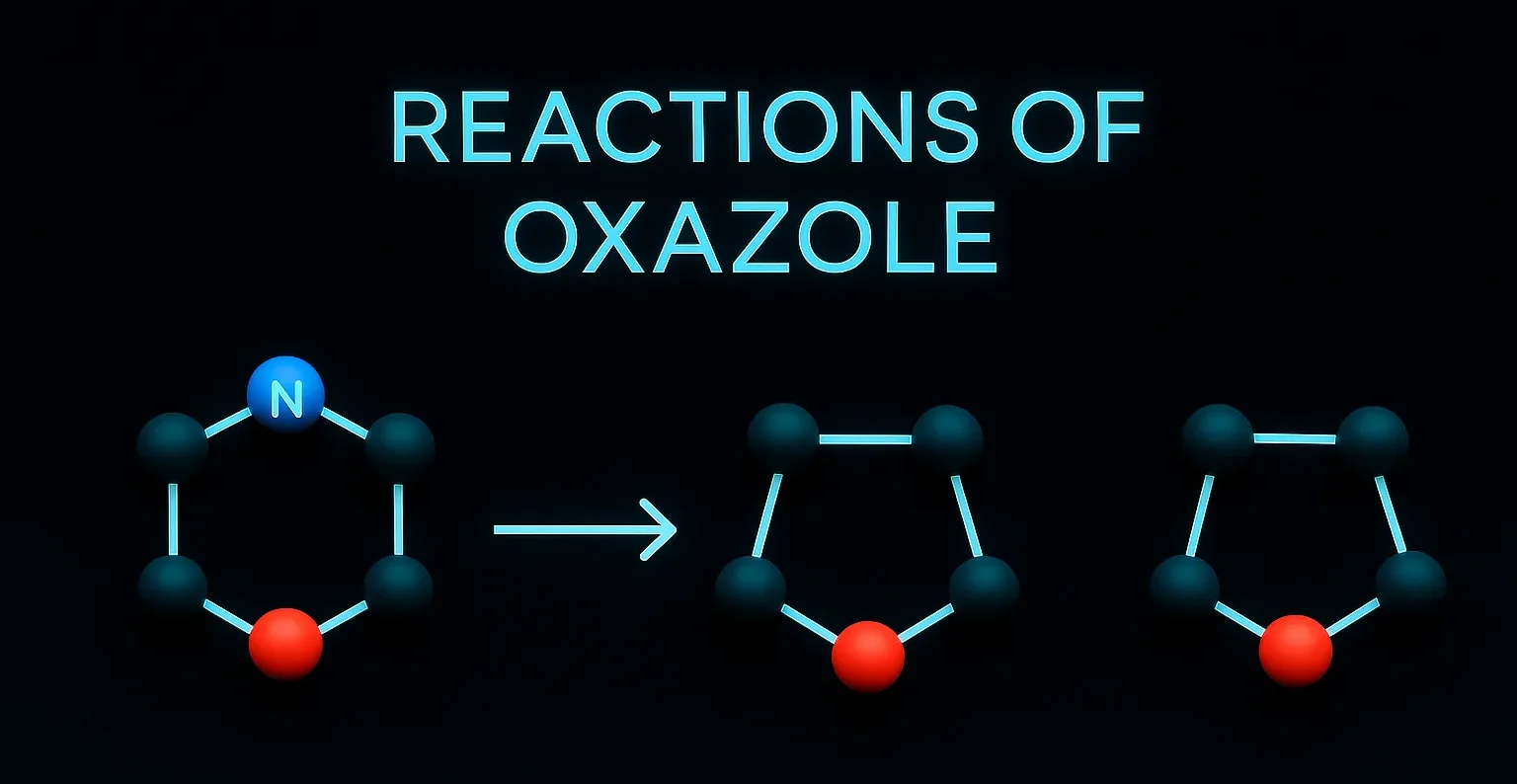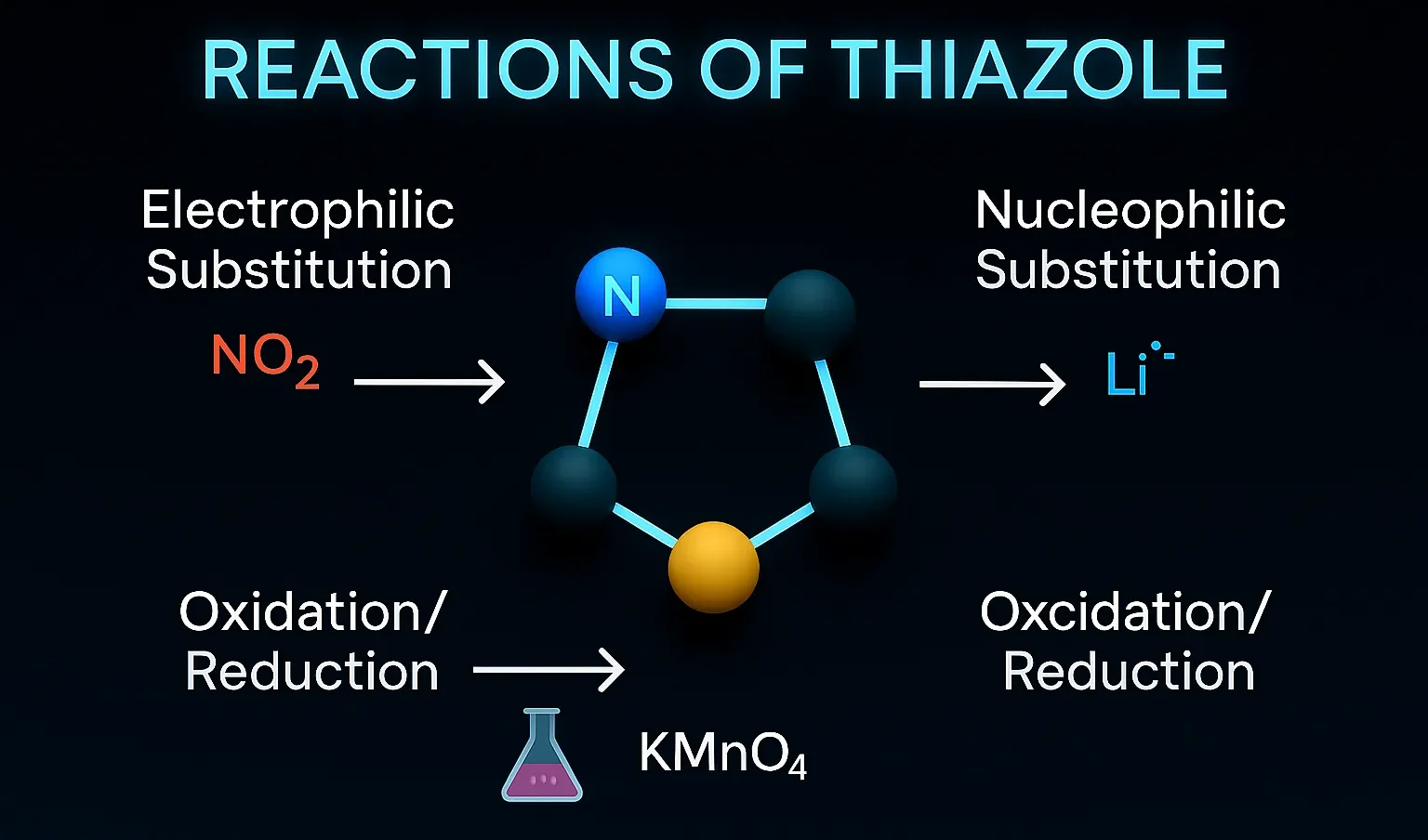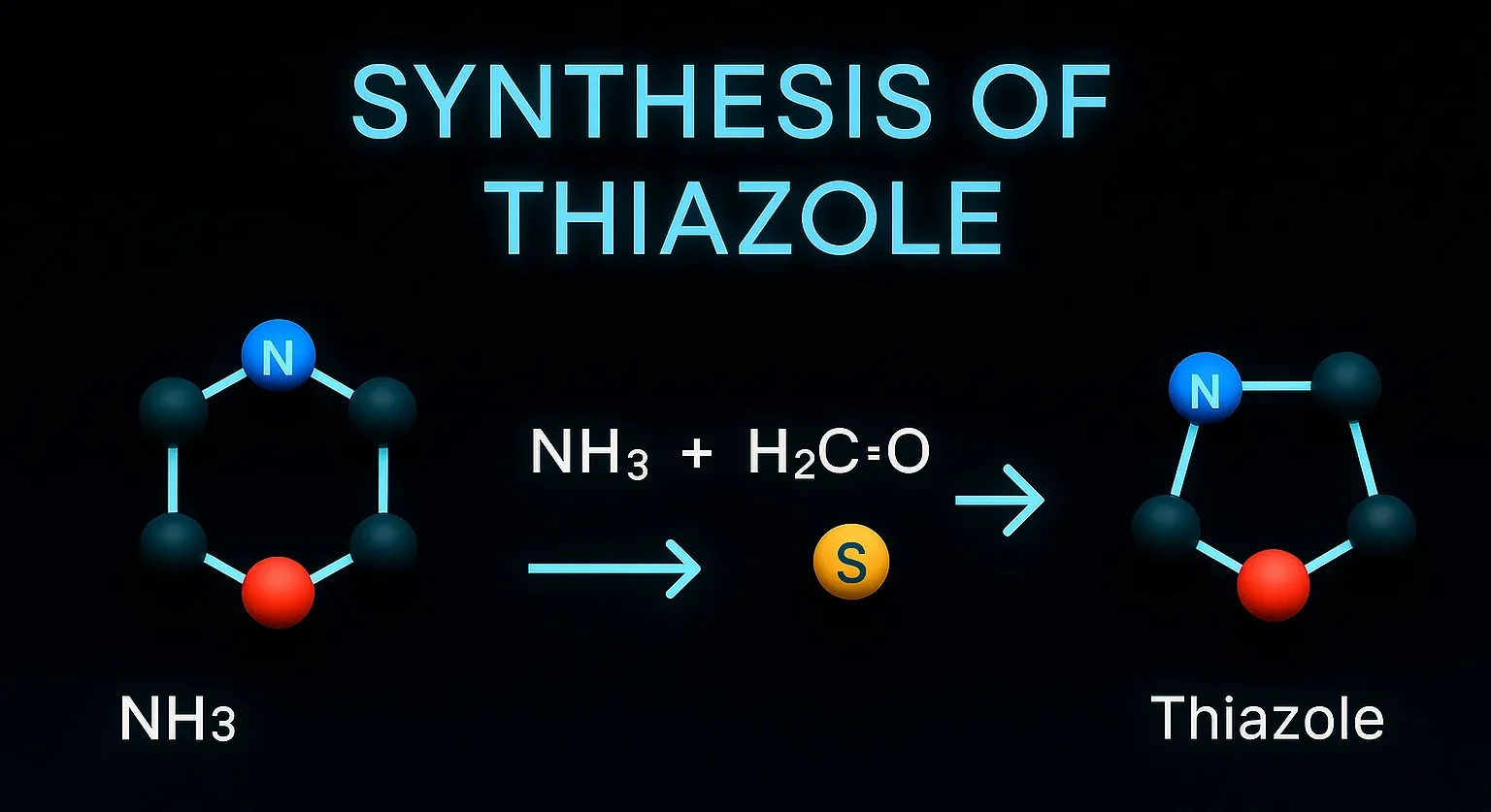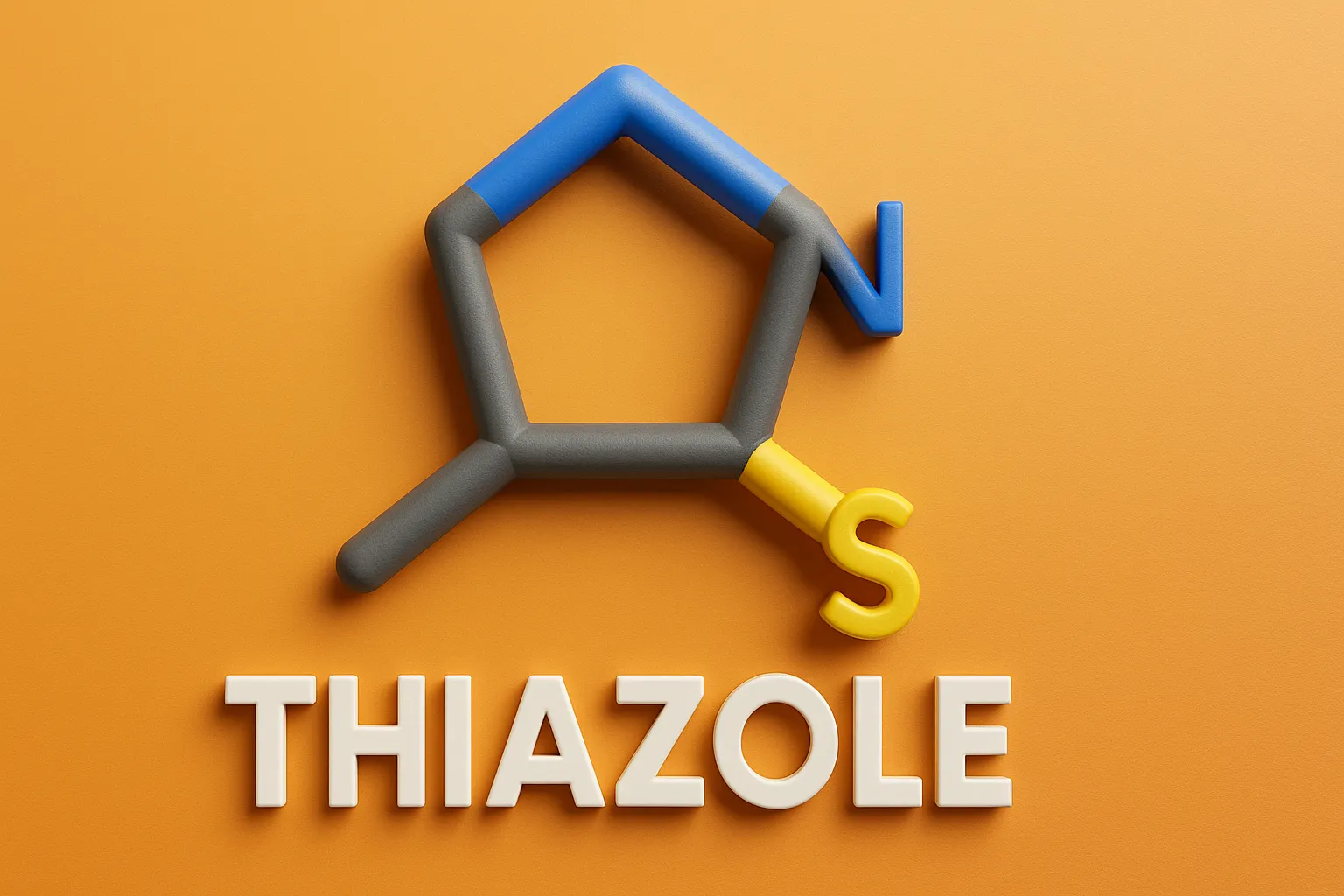Reactions of Oxazole
Reactions of Oxazole include electrophilic substitution at the 5-position, nucleophilic substitution at the 2-position, and ring-opening reactions. Electrophilic Aromatic Substitution (EAS) The ring is electron-deficient (due to N and O), so EAS is more difficult than in pyrrole, furan, or imidazole. Most reactive site: C-5, due to resonance stabilization of the intermediate. Examples: Nitration (HNO₃/H₂SO₄) … Read more










